Fall in Rocky Mountain National Park is pure magic. The air is crisp; you can witness the first snowfalls of the season, the migration of the native wildlife, and the aspen trees shedding their leaves for a spectacular show of fall foliage.
Located just an hour north of our Winter House vacation rentals, you’ll be close enough to spend a few days of recreation time in one of the greatest National Parks in the country. This is your guide to fall in Rocky Mountain National Park!
FALL WEATHER IN ROCKY MOUNTAIN NATIONAL PARK
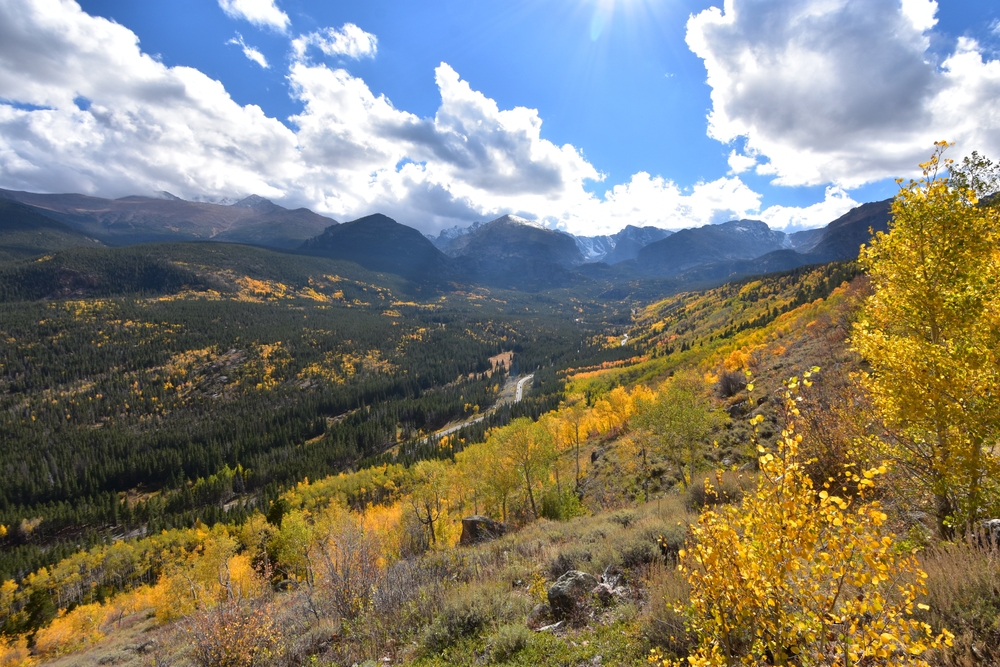
September weather has the park rangers zipping up their fleece jackets! The weather during fall in Rocky Mountain National Park is crisp but pleasant and very dynamic. Starting in September and stretching through October, the park undergoes a noticeable shift in temperature and conditions.
Daytime fall temperatures in Rocky Mountain National Park range from the 50s and 60s degrees in September and October. At night, temperatures drop to about the high 20s to the low 40s.
By November, it’s cooled down quite a bit. Highs in November are usually around 40 degrees, and lows are, on average, the high 10s to low 20s degrees.
The higher elevations of the park tend to be cooler, so if you’re planning hikes or excursions up in the mountains, expect a sharp drop in temperature as you ascend. Packing extra layers is always the way to go.
Though fall in the park is relatively dry, early snowfalls can occasionally grace the peaks and valleys as early as September. However, the heavier and more consistent snowfall tends to arrive later, typically in November.
WHAT TO PACK FOR A FALL PARK VISIT
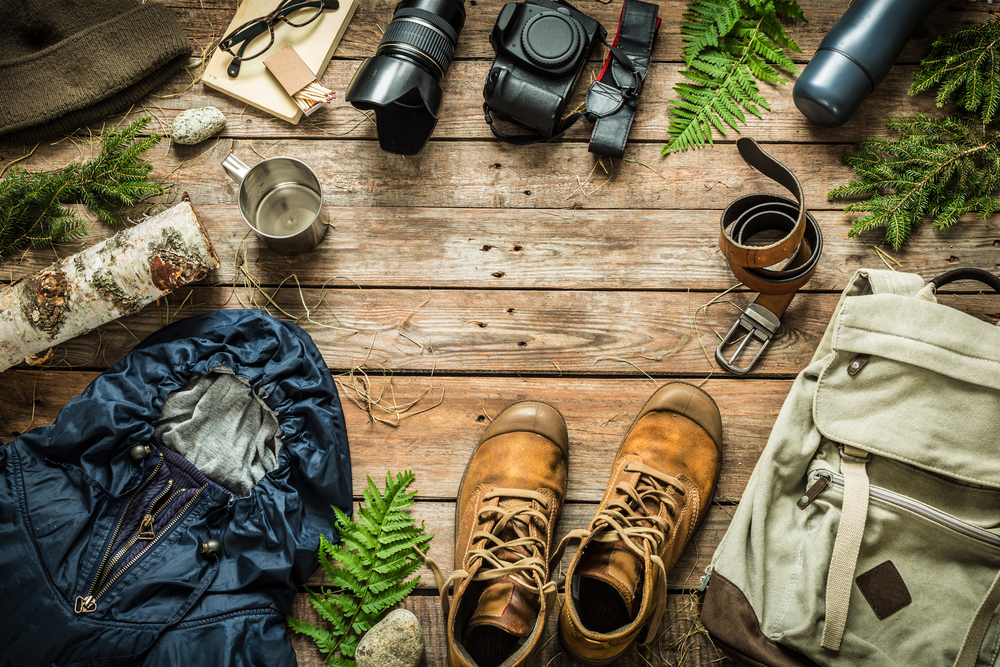
Ensuring you’re adequately prepared for a fall trip to Rocky Mountain National Park is essential. As the park transitions from the warmth of summer to the chill of winter, you’ll have to be ready for various temperatures.
Fortunately, the September foliage is usually accompanied by mild temperatures, but October brings a cooler and sometimes frosty embrace. By November, you’ll probably see some snow! To help you navigate these changes and make the most of your visit, here are some essentials for each month of fall.
September:
- Layered Clothing: Layers are your best friend when dealing with temperature shifts. Merino wool is the warmest!
- Jacket: Ideal for cooler nights and higher elevations.
- Footwear: Sturdy Hiking Shoes
- Sun Protection: You’ll want sunglasses, sunscreen, and a hat for the intense high-altitude sun.
- Water Bottle: Be sure to stay hydrated while you’re at higher elevations
- Socks: Again, moisture-wicking wool is the best material.
- Camera: You’ll definitely want a camera to capture the fall foliage and wildlife.
Come October, you’ll want everything on the September list plus:
- Warm Layers: Think thermals and fleece.
- Insulated Jacket: It’ll likely dip below freezing, so bring a warm jacket.
- Footwear: Waterproof boots. Early snow and wet conditions are possible.
- Outer: Rain Jacket, gloves, and beanie.
- Extras: Chapstick and lotion – perfect for combatting the drier air.
By November, the park is firmly transitioning into winter. Depending on the conditions, and if it’s snowing, you might also want:
- Snow Gear: Waterproof and insulated pants and jackets.
- Footwear: Snow Boots with good grip for icy patches.
- Under Layers: Thermal underwear – base layers to retain body heat.
- Extras: Neck gaiter or scarf.
FALL ACTIVITIES IN ROCKY MOUNTAIN NATIONAL PARK
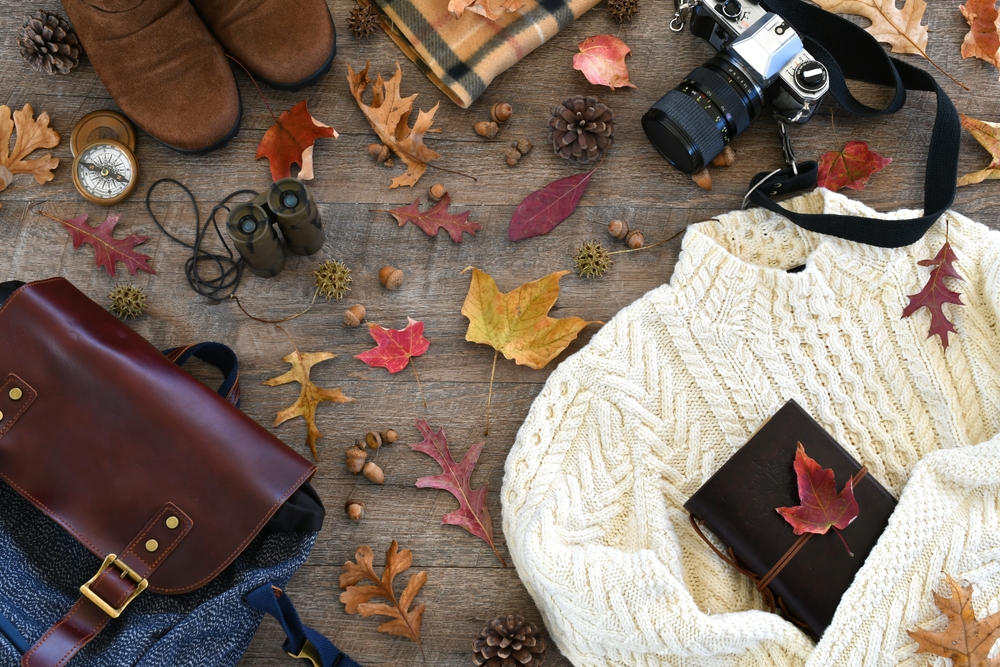
Leaf Peeping
Watching the golden aspens change color is by far one of the best things to do during fall in Rocky Mountain National Park.
The peak time for high country fall foliage is typically from late September to early October. This is when the aspens transition from lush green to radiant shades of gold, red, and orange. One of the best ways to witness the fall colors is to do either the Trail Ridge Road or Old Fall River Road scenic drives.
Alternatively, if you prefer hiking, the Bear Lake and Alberta Falls hikes have some of the best foliage views.
Wildlife Spotting
Fall is one of the best times for wildlife spotting in Rocky Mountain National Park.
One particularly awesome wildlife phenomenon in fall is the elk rut, which takes place from mid-September through mid-October, where male elks are out and about all over the park vying for the attention of the females.
Horseshoe Park and Upper Beaver Meadows are the best places to witness the elk rut mating season. Also, watch for mule deer, bighorn sheep, and the occasional black bear. With winter right around the corner, all the animals are quite active as they prepare for the cold.
Fishing
Fall is the premier season for fishing in Rocky Mountain National Park. Like most Colorado, trout fishing reigns supreme, and the park’s freshwater bodies don’t disappoint. Come fall, Loch Vale, Sprague Lake, and the picturesque Lake of Glass and Sky Pond are all teeming with rainbow, brown, brook, and the prized native cutthroat trout.
If you want to fly fish, Grand Lake, Lake Granby, and Shadow Mountain Lake are some of the best places to go.
Stargazing
With its high altitude, lack of light pollution, and clear night skies, Rocky Mountain National Park is fantastic for stargazing. Fall in Rocky Mountain National Park even offers one of the clearest views of the Milky Way.
Two of the best spots for stargazing within the park are Trail Ridge Road and Bear Lake. With its elevated vantage point, Trail Ridge Road offers wide-open views of the night sky.
Meanwhile, Bear Lake serves as a window to the stars and provides a stunning silhouette of Hallett Peak, adding depth to the views.
For the best stargazing experience, we recommend visiting on moonless nights and bringing along a telescope. Be sure to dress warmly, as temperatures can drop significantly after sunset.
Nature Photography
Fall in Rocky Mountain National Park is one of the most fantastic places for photography. It’s perfect for serene still lakes, fall foliage, and even snow-capped distant peaks!
Here are some good photo spots:
- Moraine Park: Provides views of mountains, rivers, evergreen forests, and valleys.
- Bear Lake: Ideal for capturing autumn foliage and potential wildlife sightings.
- Lily Lake: Offers clear lake views that can capture reflections of the surroundings.
For the best lighting conditions, visit these spots during sunrise or sunset.
Drive the Trail Ridge Road
We’ve mentioned it a few times, but driving the Trail Ridge Road is truly one of the best things to do during the fall in Rocky Mountain National Park.
It’s the highest continuous paved road in the U.S., reaching elevations up to 12,183 feet! This means you’ll get some of the park’s most epic views. But here’s a heads up: it’s only open until mid-October due to the weather, so try to visit earlier in the season. Be sure to snag your timed entry permit from NPS before you go.
Along the way, a few must-stop spots are Many Parks Curve, Forest Canyon Overlook, and Medicine Bow Curve. These are the perfect places to grab some photos or just take a break and enjoy the view.
Depending on how often you pull over, the drive can take anywhere from 1.5 to 4 hours. So, start early and make the most of it!
Hiking
Last but not least, hiking is by far one of the best things to do in the fall in Rocky Mountain National Park. With the crisp fall air and foliage, hiking conditions are perfect. Remember, if you plan to hike to higher elevations or later in the season, you may encounter some ice/snow and might need some technical hiking skills and the proper equipment.
Here are some of the best fall hiking trails in Rocky Mountain National Park.
The Loch via Glacier Gorge Trail
This 6-mile hike is known for its beautiful Alberta Falls and a popular spot for catching the sunset. Classified as moderate, it gets crowded at the trailhead, but the views make the trek entirely worthwhile. Hikers should prepare for an elevation gain of 1,062 feet.
This moderate trail is a 6-mile round trip and offers hikers a significant elevation change of 1,394 feet. Taking a little over 3 hours to complete, it rewards hikers with a panoramic 360-degree view encompassing Longs Peak in the south to the Mummy range in the north.
A shorter hike of 2.9 miles, this trail is suitable for a quick 90-minute excursion. Open throughout the year, it offers a moderate challenge with 620 feet of elevation change. As you traverse the path, you’ll be greeted by jaw-dropping mountain views interspersed with fall foliage.
FALL EVENTS IN ROCKY MOUNTAIN NATIONAL PARK
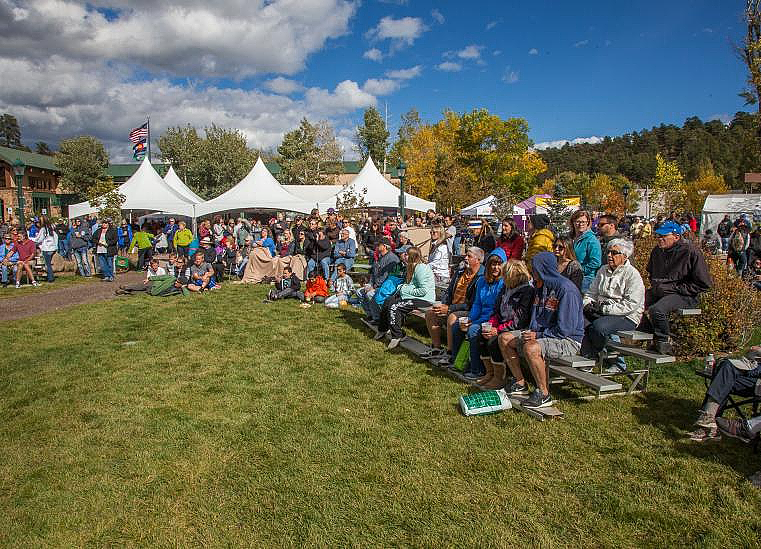
While RMNP doesn’t have fall events, Estes Park, just outside, sure does! Here are five fall events hosted in Estes Park.
- Autumn Gold Festival: This festival is Estes Park’s way of welcoming the season with a mix of beer, brats, and multiple band performances.
- Rails in the Rockies: At Colorado’s Premier Model Train Show, you can see various train gauges, from the minuscule “Z” to the toy-like “G,” including British and German railroad models.
- Elk Fest: Head to Downtown Estes Park to honor the local elk population. This family event includes live music, food trucks, bugling contests, and several performances.
- Pumpkins & Pilsners Festival: Adults can relish live music and craft beer, while kids can engage in games, crafts, and a bounce house. Plus, it’s the perfect spot to pick out your Halloween pumpkins!
- Rocky Mountain Craft Spirits Festival: Elevate your spirits (literally!) by sampling from over 25 craft distilleries. Attendees can enjoy live music, industry talks, bar games, and much more while sipping on some of the finest spirits the Colorado Rockies can offer.
ENJOY ROCKY MOUNTAIN NATIONAL PARK IN THE FALL
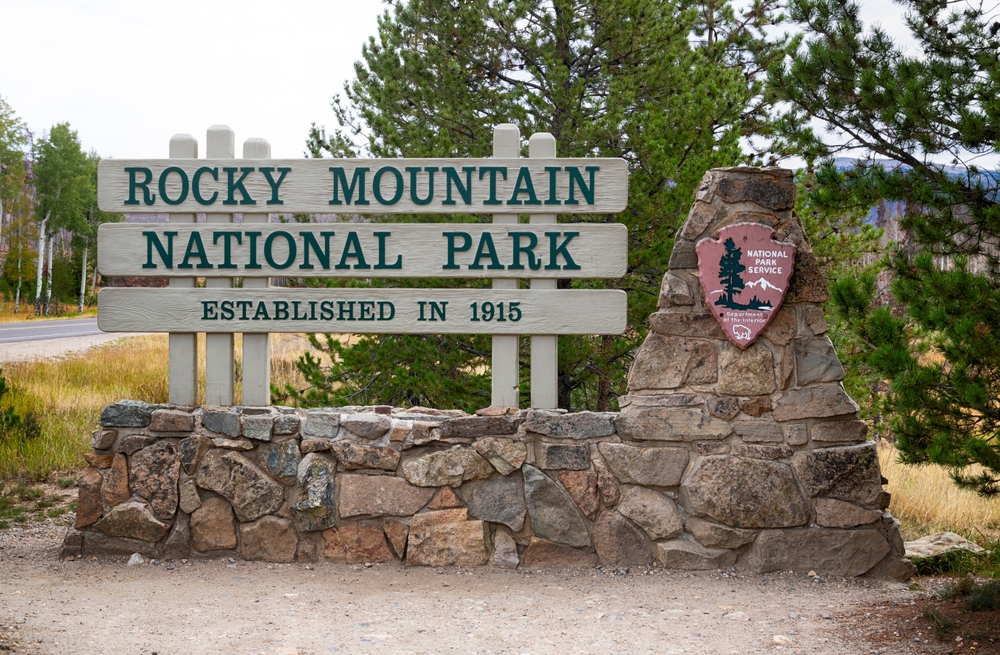
Between the changing leaves, the haunting calls of rutting elks, and the lack of crowds, it’s hard to beat fall in Rocky Mountain National Park. Book your stay at Winter Park House today to witness the magic happening during this time of year.